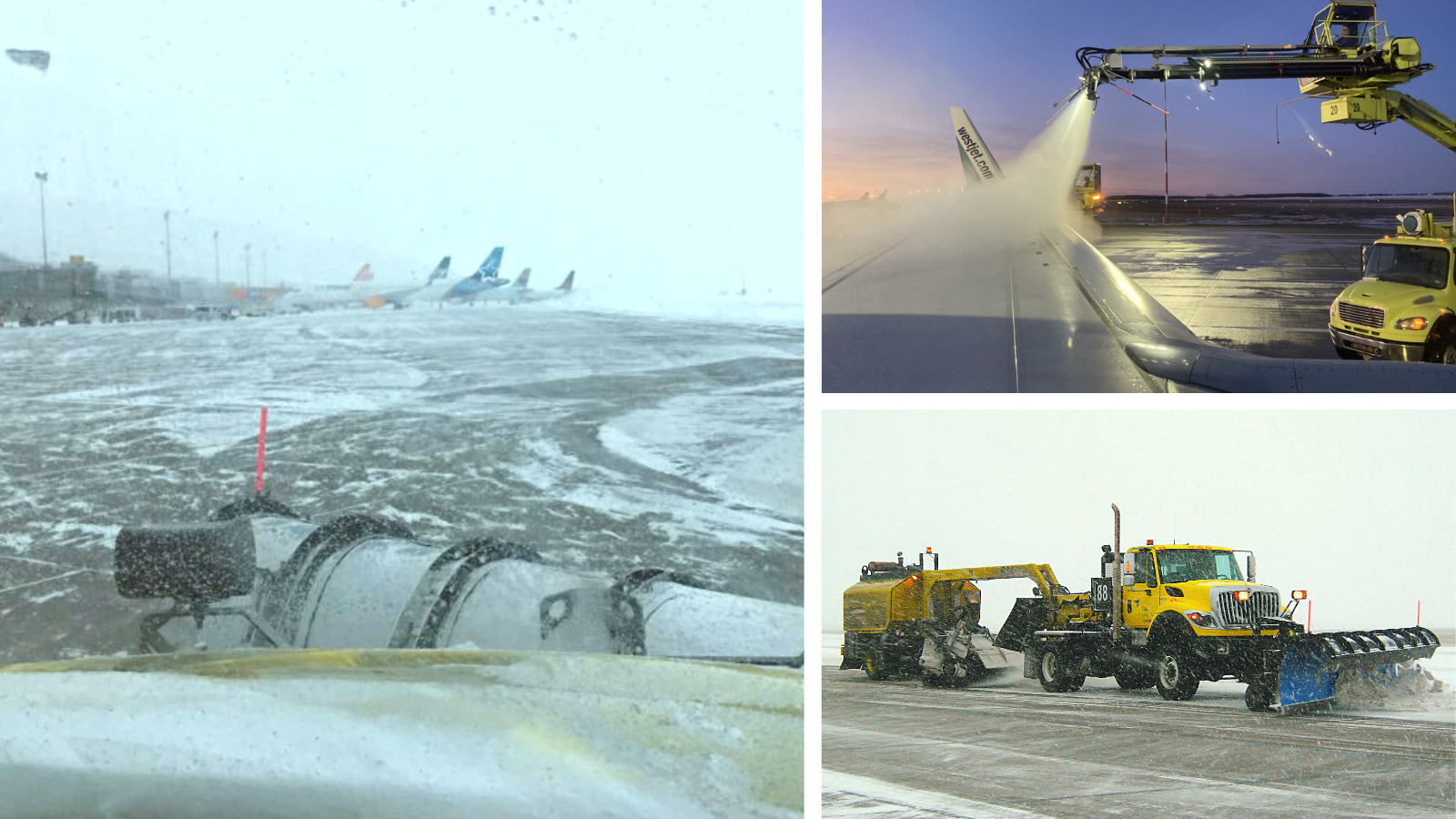Edmonton International Airport fearlessly faces conditions colder than Antarctica
| Company | Edmonton International Airport |
|---|---|
| Date | 29.01.2024 |
How Canada’s northernmost major airport stays open in extreme winter weather, including temperatures recently plunging below -45 degrees Celsius
When it comes to extreme winter weather, Edmonton International Airport (YEG) has seen it all.
In brutally cold temperatures, blinding snowstorms, howling winds, freezing rain and snow-covered landscapes as far as the eye can see, passengers continue to safely arrive and depart.
On roughly 7,000 acres outside the urban sprawl, YEG is surrounded by rural prairie landscapes with lots of open space for winds to blow snow in from the fields. The airport is known to experience temperatures colder than the North Pole or Antarctica. Recently, the airport broke records for the longest stretch of temperatures below -45 degrees Celsius during an unprecedented polar vortex. YEG joined the ranks of the world’s coldest places, taking the eleventh spot on the list on January 12, 2024.
Through these bone-chilling temperatures and icy winter conditions, the airport operations team carried on, with the safety of all people, from workers to travellers, being the paramount concern. Some delays and cancellations beyond the airport’s control were inevitable. For example, de-icing efforts were briefly challenged with extreme temperature drops combined with precipitation. The YEG team, along with airlines and de-icing partners, worked collaboratively around the clock to ensure aircraft could safely depart.
Enduring the test of the most extreme winter weather conditions, YEG proudly perseveres. In fact, you’ll find aprons and runways in pristine condition. The airport is always focused on ensuring aircraft can land and take off safely no matter what Mother Nature throws our way.
Here are five reasons why YEG can stay open in extreme winter conditions
Keeping planes moving through extreme winter weather has zero room for error. A safe, efficient response to adverse weather conditions requires deep knowledge of winter operations, months of preparation and concentrated training.
1. First-class winter operations team
YEG’s most valuable asset is our highly skilled winter operations team, which keeps the airport operating 24/7, 365 days per year. Fully trained and tested for the winter season, our team is ready for all types of conditions.
When extreme winter weather is rolling in, our crews are ready to move. Carefully monitoring the forecast, if there is potential for rain or freezing rain, we spray our runways and aprons with a potassium acetate solution that stops ice from forming. This is an extremely valuable pre-emptive line of defense.
“Timing is the most significant factor, and our crews work 12-hour shifts around the clock,” explains Dean Ervin, YEG’s Director of Aerodrome Operations, Safety and Compliance.“Our fleet of snow-clearing vehicles work in orchestrated precision to keep runways and aprons safe for aircraft. We constantly debrief, evaluate performance and adjust our plan depending on the type of weather we are facing.”
2. Using technology and data to predict winter conditions
YEG’s winter operations crew has many tools to keep us nimble. Access to technology helps us be exceptional in our snow and ice response. We rely on numerous weather monitoring and predicting tools such as Environment Canada, Weather CAN, Wx Weather Sentry, Vaisala, NAV Canada AWWS-Forecasting, Weather Network and Doppler Radar.
Data-driven technology platforms such as our Vaisala Runway system give us real-time information on the substrate, allowing our team to predict conditions, response times, chemical applications required and any precipitation levels present.
We research decades of extensive historical weather data to monitor trends and adjust to changes. Historical weather data allows us to analyze climate change, predict potential winter storm scenarios, and proactively plan for and practice our responses.
The winter of 2022 was a true test for airports across Canada, with massive storms, predominantly freezing rain, causing a ripple effect of flight delays and cancellations. However, winter storms such as these are familiar to YEG. We have faced enormous ice and snow events in the past, including one year when it snowed for 24 days straight, accumulating over 200 cm of snow over that season.
In these weather situations, YEG is ready to go with our experienced team and all hands on deck. If it means we need to recruit people from other airport teams, we will do that too.
“If you can operate a shovel, you will be drafted to help clear snow to keep people moving safely and efficiently,” says Dean Ervin, YEG’s Director of Aerodrome Operations, Safety and Compliance.
4. Practice, practice, practice
YEG’s winter operations training program is continuous, year-round, starting with leadership and cascading to all team members, including lead hands, operators and labourers. Our crews receive classroom instruction and extensive real-time, scenario-based operational practice. We know that all winter storms have unique factors, and our team is trained to face a variety of extreme weather scenarios. We always look at new technology processes, procedures and techniques to improve our operational readiness and response.
5. Preparing for the future
One thing that will always be around is Edmonton’s winters. We prairie-living Canadians are known to be tough in the winter, poised and ready for extreme conditions.We also know the weather is unpredictable and the climate is changing drastically.
As a Canada’s most northern international airport, we must do everything possible to prepare for any type of winter situation. YEG is focused on embracing the future by using technology and innovation to change how we do business, including our winter operations plan.
Our team is constantly seeking new and innovative ways of being better at tackling winter weather at our airport. For example, YEG is already an industry leader in adopting drone technology in airport operations. We currently use a specialized drone to conduct runway safety inspections and a drone mimicking a falcon to deter birds around the airport. Drone technology is certain to shift how we manage winter operations, and we are currently looking at how we can use drones to monitor winter weather data in real time.
—
The cold doesn’t bother us at YEG! We are exceptional at managing our winter airport and never cut a single corner when it comes to safety as our top priority when facing whatever cold spell Mother Nature decides to cast on us.
Contact
1000 Airport Rd NW
Edmonton
Alberta
Canada
T9E 0V3



